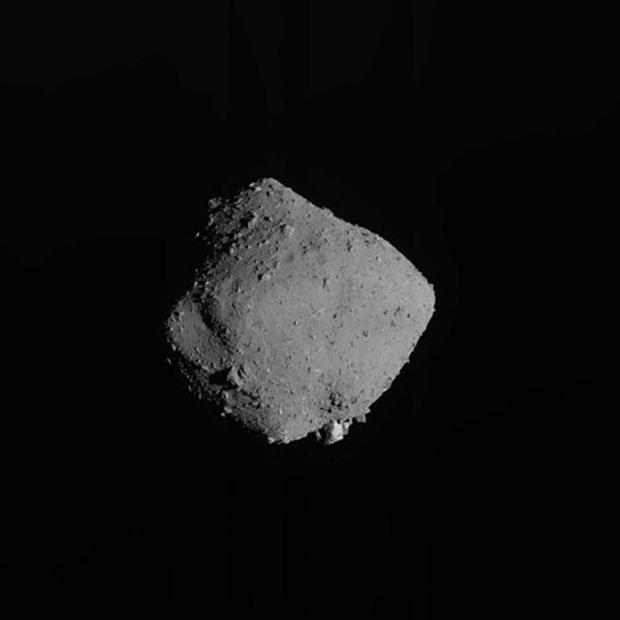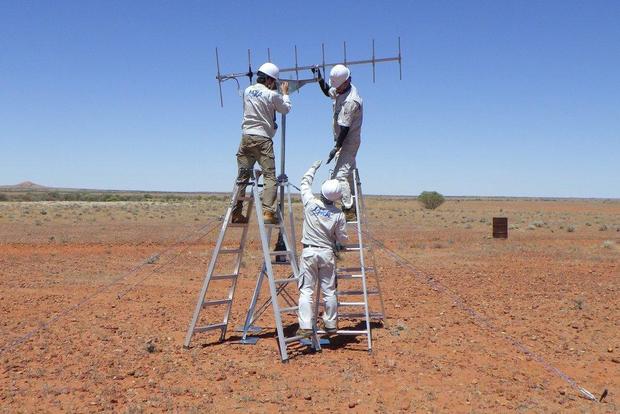A Japanese capsule is returning to Earth on Saturday carrying the first-ever rock samples from beneath the surface of an asteroid. When it plummets to Earth, the capsule will provide a stunning show above the Australian outback, streaking across the sky as a dazzling fireball.
Project manager Yuichi Tsuda called the mission a "rare event in human history." It marks just the second time pristine, untouched material directly from an asteroid has been brought back to Earth.
JAXA, Japan's national aerospace and space agency, was expected to stream the event live at 12:00 p.m. ET on Twitter and YouTube. Watch it here:
Japan's Hayabusa2 probe, which is roughly the size of a refrigerator, launched in December 2014, thrilling scientists when it landed on the diamond-shaped asteroid Ryugu, which means "dragon palace" in Japanese, located 185 million miles away.
On Saturday, it successfully released a capsule for Earth, according to the country's space agency.
The 15-inch capsule separated from the probe about 136,701 miles above Earth ahead of its planned descent into the Australian outback, near Woomera, South Australia. A parachute will open about six miles above the ground and signals will alert space agency officials to its location.
Scientists expect the capsule to bring home a small amount of asteroid material, collected last year, with the goal of learning more about the origins of the solar system and life on Earth. Scientists believe that the rocks that compose the asteroid are around four billion years old.
The samples could shed light on "how matter is scattered around the solar system, why it exists on the asteroid and how it is related to Earth," Tsuda told reporters, according to a Friday news release.
The samples were collected during two separate landings on Ryugu last year. During the first, the probe collected dust and blasted a hole in the asteroid's surface to find additional material beneath it. Several months later, the probe returned to the crater it created to collect more samples.
"We may be able to get substances that will give us clues to the birth of a planet and the origin of life... I'm very interested to see the substances," mission manager Makoto Yoshikawa told reporters.
But the rescue mission could prove to be a challenge.
According to The Associated Press, JAXA officials set up satellite dishes, marine radar, drones and helicopters to assist in the scavenger hunt.
After officials find and collect the capsule, the samples will be processed and flown to Japan, then divided between researchers at JAXA, NASA and other international organizations.
Some samples will be set aside for future studies when technology has further advanced.
JAXA plans to extend Hayabusa2's mission for more than a decade, with its sights set on two new asteroids, 2001 CC21 and 1998 KY26.
The NASA OSIRIS-REx mission recently collected a sample from another near-Earth asteroid — Bennu, which is similar to Ryugu. The sample will return to Earth in 2023.
Article From & Read More ( Watch Japan's Hayabusa2 mission deliver first subsurface asteroid samples to Earth - CBS News )https://ift.tt/33M3pKE
Science



No comments:
Post a Comment